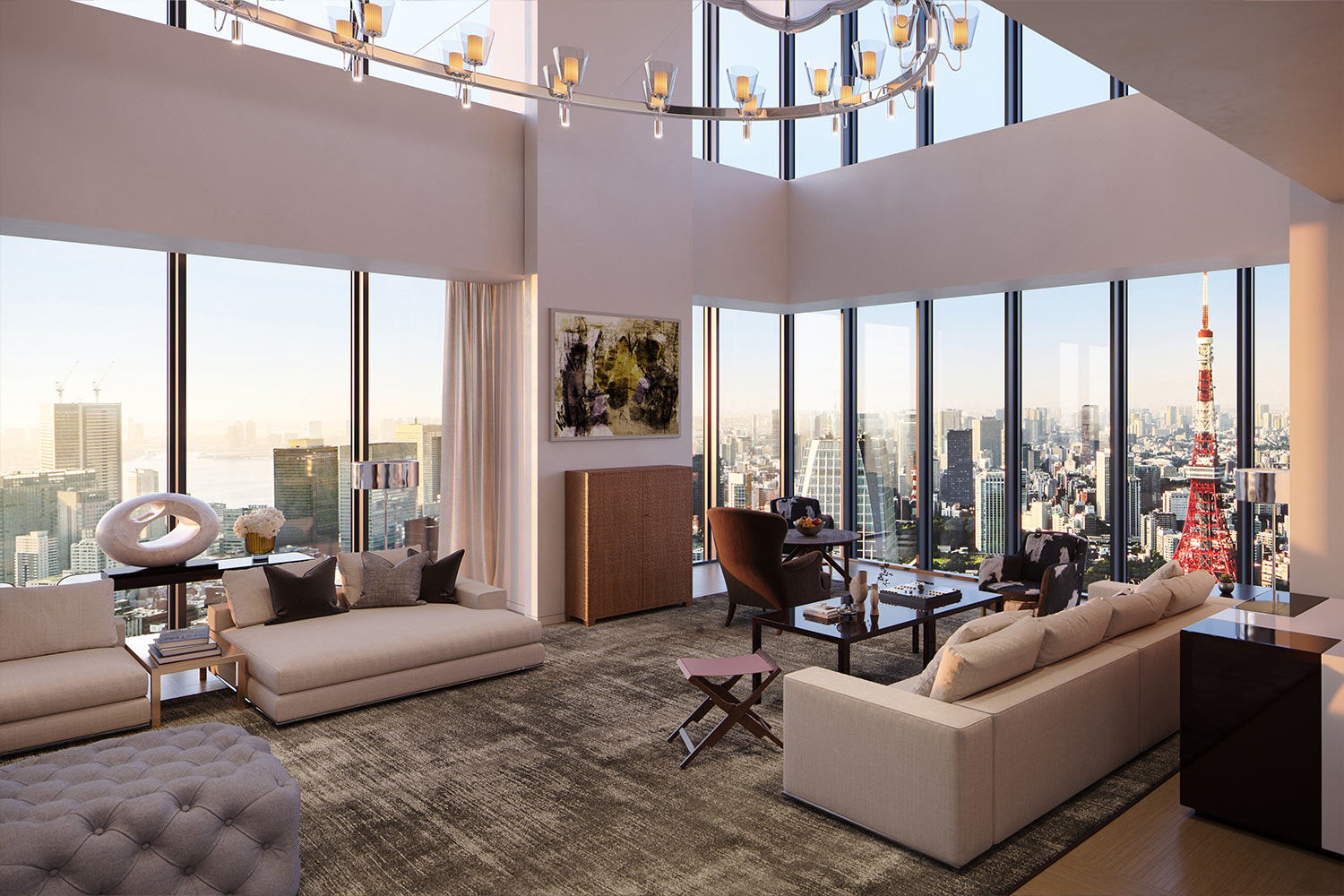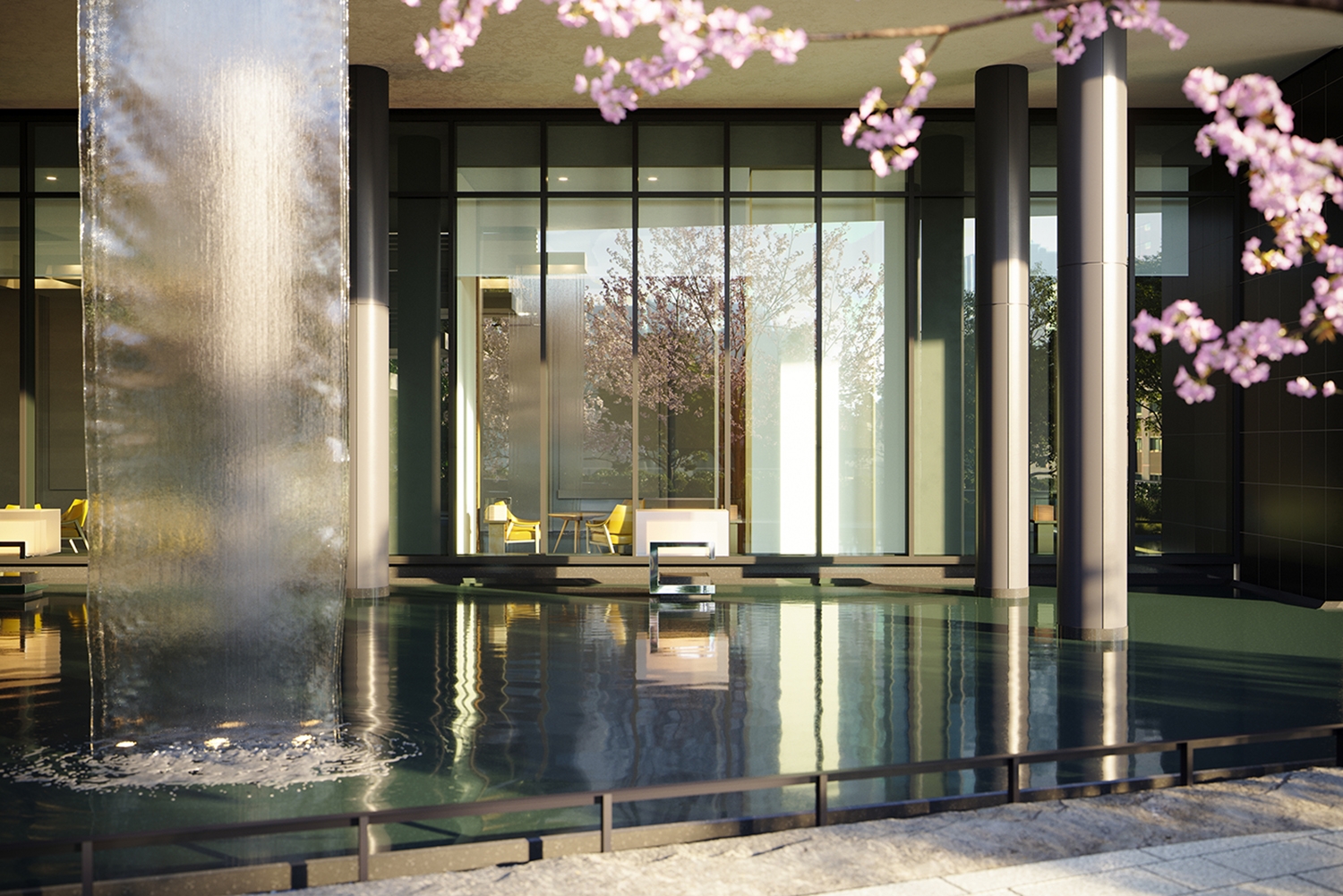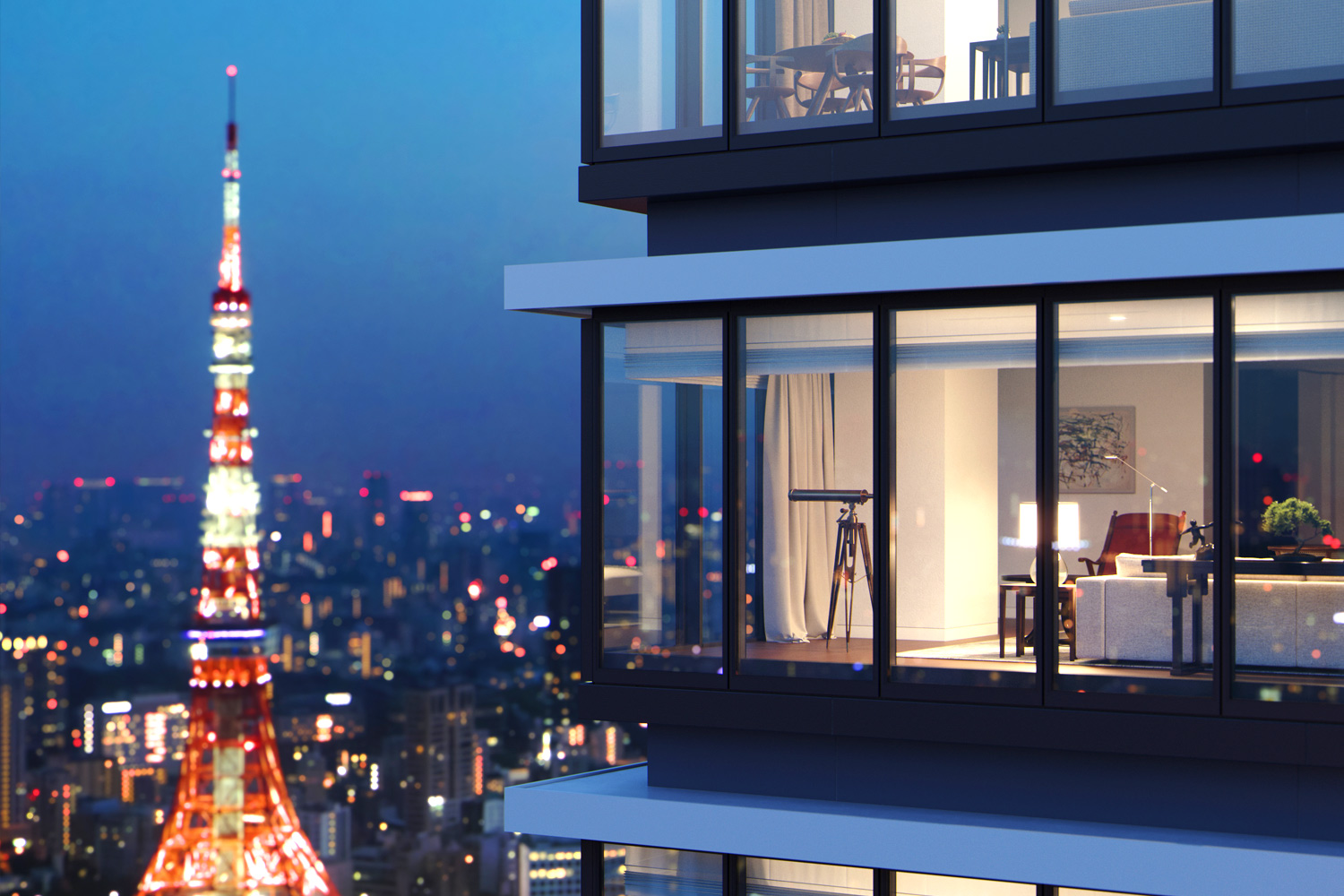Big in Japan: A Sky-High Standard of Luxury Living
A new standard of luxury living awaits Tokyo—fusing green credentials, high-end design and artistic spaces, and building resilience.
The Evolution of Big City Living
Where and how we live is changing. For starters, more of us than ever are moving to cities. By 2050, over two-thirds of the global population will live in urban areas1. By then, an estimated 6.7 billion people will live in the world’s cities, 2.5 billion more than today1.
The shift is reshaping real estate markets across the world. New apartments in the 20 largest U.S. metropolitan areas are on average 9.7% smaller than they were a decade ago2. In Hong Kong, a record 13% of apartments sold in 2019 were smaller than two parking spaces combined3. These tiny units represented 0.2% of total sales in 20104. And in Tokyo, where the average price per unit reached a 30-year high in 20205, micro apartments are increasingly popular.
Space within cities has become a luxury. This has given rise to an ultra-high-end residential market. Sky-high property prices are common in exclusive neighborhoods like SoHo in New York, Kensington in London, and Ginza in Tokyo. However, today’s shortage of space within cities has also led developers to focus on tall buildings and towers—which capitalize on the potential of vertical spaces. While these apartments typically come at a premium, they create new ways of living that foster unique cultural experiences, stronger and safer communities, and harmony with nature.

Building Cities that Endure
Urban migration inevitably creates challenges. The biggest of these is accommodating larger populations in a way that’s sustainable. Today, building construction and operations account for around 38% of global energy-related carbon emissions6. To get on track for a net-zero-carbon building stock by the mid-century, cities must halve their direct building emissions by the end of this decade6.
Urbanization offers many opportunities to deploy mitigation and adaptation strategies that can limit the average global temperature increase. Well-planned urban development has the potential to generate a lower environmental footprint. Greater resource efficiency in turn equates to less energy usage, while the avoidance of sprawling land consumption can lower pollution levels. Smarter cities can be promoters of biodiversity and can champion urban greening7.
The positive impact that green buildings can have within cities is significant. Not only are they efficient in their use of resources like water and energy, they also house waste reducing systems, have good air quality, and deploy materials that are non-toxic and recyclable8. With the quality of life for occupants of paramount importance, green buildings are also built in greater harmony the local environment during their development and day-to-day operations.
_EXT08_Elevation_View_E.jpg)
Standardized, globally recognized metrics make sure that green buildings adhere to strict environmental standards. Certifications have become an important tool to this end, promising to accelerate sustainable building practices by providing quality assurance across design, construction and operations. As such, buyers are increasingly considering green buildings, with younger generations in particular showing a preference for buildings with proven sustainability credentials and features9.
A Leader in Sustainability, Culture and Safety
Tokyo is one of the largest and most vibrant cities in the world—and for decades, Mori Building Co., Ltd. has shaped Japan’s dynamic capital. Indeed, it has done so with the future in mind, driven by a commitment to sustainability, culture and safety. The company believes the 21st century is the “age of cities”, setting the stage for new connections and innovation, as a preeminent source of new ideas and concepts.
Mori contributes to the creation of a sustainable society for the future by promoting the harmonious coexistence of cities and nature, low-carbon urban development, and the recycling of resources including water, waste and wastewater. The company sees its mission to create high-quality spaces and environments, while continuing to nurture cities in concert with all stakeholders.

Key to realizing this vision is the company’s Vertical Garden City approach to resolving urban environment challenges. This integrates a host of work and living functions into a high-rise building or complex, with all amenities within walking distance. The Vertical Garden City minimizes above-ground built-up areas; provides shared open green spaces for residents and workers by up to 30%; and reduces energy usage by close to 40%.
The company also continues to foster culture through the arts, creating an intellectually rich environment that brings art and culture into daily life through the establishment and operation of cultural facilities, such as the Mori Art Museum and Mori Building DIGITAL ART MUSEUM EPSON teamLab Borderless. These venues stimulate visitor interaction and the exchange of ideas between the many people who visit them annually. Likewise, the Hills Club which Mori operates are exclusive gathering places for admirers of culture and the arts. These clubs provide an exquisite setting for formal business meetings, luncheons and dinners, or simple planning sessions.
Mori is focused on improving fundamental urban infrastructure and empowering the city with robust safety and security measures, both physically and digitally. The aim is to develop a city that is safe, secure and more resistant to natural disasters — as well as contributing to the surrounding areas as a disaster prevention and relief center.

The Nexus of Cultured Living in Tokyo
Toranomon Hills Residential Tower is unlike any residence in Tokyo. A team led by renowned architect Christoph Ingenhoven designed the building to meet the growing demand for sustainable, cultured and safe urban living spaces, delivering on Mori’s mission of creating a better society. And design from tonychi Studio complements that with a vibrant interior for Mori’s most luxurious offering to date. Set for completion in January 2022, the 54-story residential tower will be home to about 550 households.
Unlike most other residences in central Tokyo, the Toranomon Hills Residential Tower affords residents an unprecedented amount of living space, a unique selling point given its exclusive location – just a short stroll to Ginza and the Imperial Palace. Many residences offer breathtaking views of the city, including the Tokyo Tower and Tokyo Bay. And various installations by contemporary artists will enrich residents’ lifestyles. Residents will also appreciate the growing neighborhood around Toranomon Hills, which offers an acclaimed new dining, culture and entertainment spot while still having connection with an existing culture and local community.

Equally as striking are its sustainability credentials. This is part of the Toranomon Hills Area Project, pre-certified as ‘Platinum’ by the prestigious Leadership in Energy and Environmental Design (LEED) ratings system. LEED is the world’s most respected and widely used green-building assessment program. Managed by the U.S. Green Building Council, it evaluates and certifies buildings and cities worldwide for environmental performance in terms of factor including water and energy efficiency, sustainable materials and air quality10.
The residential towers’ safety features mirror its state-of-the-art sustainability credentials. With the aim of shielding the development from earthquakes and tropical storms, a variety of leading technologies developed to counter such events have been incorporated into the building’s construction. These protect the structure against wind-induced vibrations, seismic tremors from small- and large-scale earthquakes, and ground motion that may be harmful to high-rise buildings over the long-term.
Toranomon Hills Residential Tower also boasts robust security features. The entranceway is monitored by surveillance cameras 24/7, while those entering the building are first checked in at the front reception desk.
Sustainable, cultured and secure, Toranomon Hills Residential Tower is unlike anything Tokyo has seen before. Welcome to the future of luxury living in the world’s most vibrant city.
.jpg)
1 UN
2 RCL Co
6 Global Alliance for Buildings and Construction
10 Green Building Council
*The CGI used in this page is based on drawings in the planning stage, and may differ from the actual shape and color. This article does not guarantee or anticipate the view, land value and the future price fluctuation.
